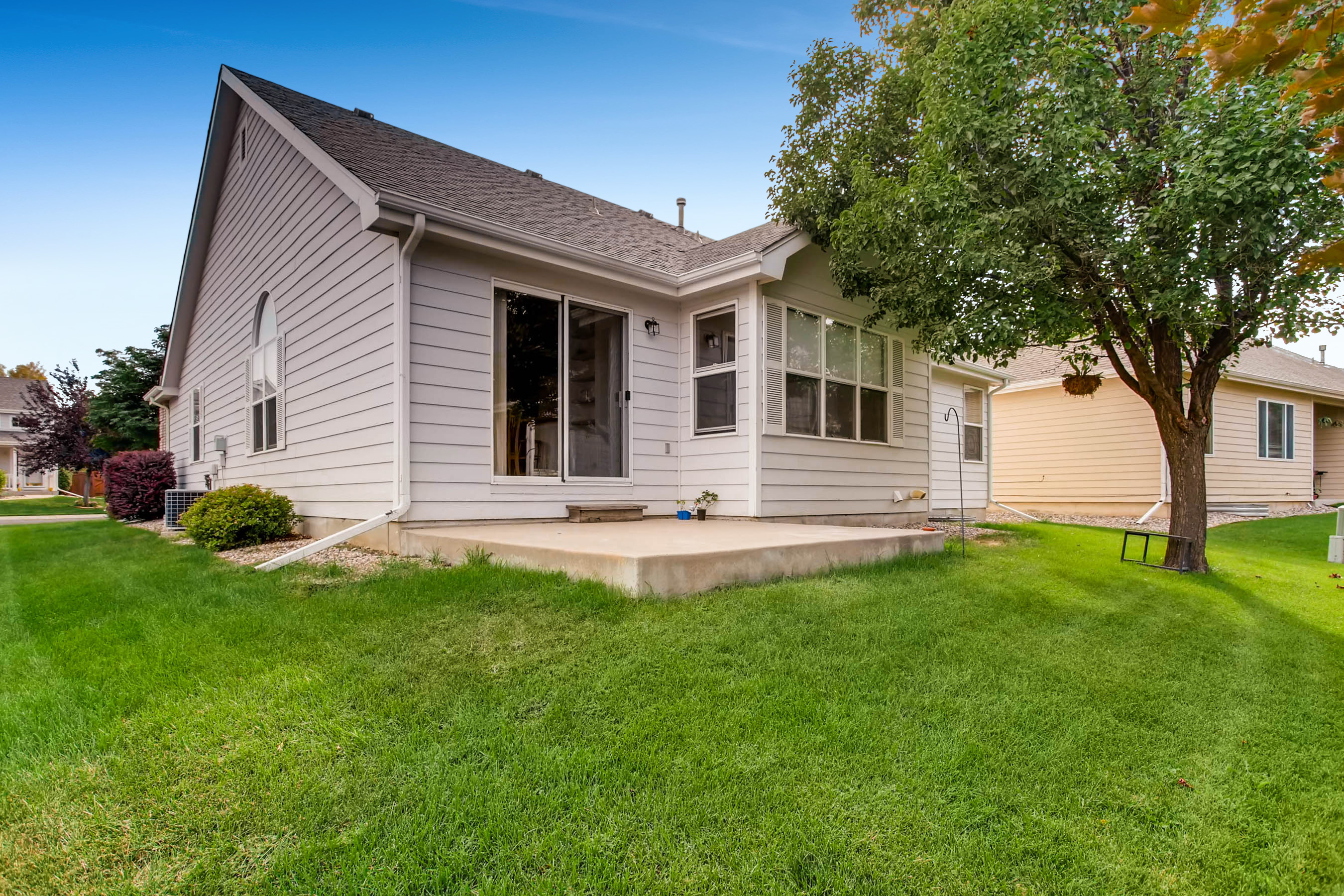How Homeownership Impacts the U.S. Economy
Windermere’s Chief Economist, Matthew Gardner, explains how a strong, stable housing market is critically important to the overall U.S. economy.
Housing Supply is an Issue that Will Not Improve Any Time Soon and Here’s Why


There are two common concerns about the housing market that one hears from both consumers and real estate professionals alike. First, they question whether or not we are on the brink of another housing bubble, and second, they want to know why there aren’t more homes for sale.
I don’t plan on addressing the concern regarding a housing bubble in this article except to say that we are not currently in “bubble” territory, although affordability does concern me immensely. Today I would like to concentrate on the second question about the lack of homes for sale.
According to the National Association of REALTORS®, there were 1.96 million homes for sale in the United States in May 2017. When adjusted for seasonality, this falls to just below 1.9 million which is essentially the same level we saw back in 2000.
Now consider that the country has added over 21 million new households during that same time period, and you can see why this is so troubling. It is worth noting that many of these new households did move into rental properties, but this still leaves the U.S. with a substantial housing shortfall, which explains why demand for homes is so high.
With the shortage of homes for sale, you would normally expect builders to meet this pent-up demand with new construction housing but, unfortunately, this has not been the case. In fact, new single-family housing starts are running at about 800,000 (annualized), and I believe we need starts to come in at over 1 million to satisfy demand – especially as older Millennials start to create households of their own and begin thinking about buying instead of renting.
We therefore have a quandary. Trust in the housing market has clearly returned, but there are not enough homes to meet the demand of buyers, and when a buyer does find a home, they are met with very stiff competition, which is driving prices increasingly higher.
So why are we in this position and how do we get out of it?
In reality, there is no single reason for the situation we are in today. Rather it is a number of factors that, when combined, suggest to me that the market will not return to equilibrium any time soon.
The first reason for the shortfall is purely demographic. As “Boomers” age, they are not following the trends of previous generations. Many are staying in the workforce far longer than their predecessors, and, as they are postponing retirement, they do not feel compelled to downsize. In fact, almost two-thirds of Boomers plan to age in place and not move even after retirement. Without this anticipated supply of homes from downsizing Boomers, there aren’t enough homes for move-up buyers, which in turn limits the supply of homes for first-time buyers.
Secondly, as a nation we just aren’t moving as often as we used to. When I analyze mobility, it is clear that people no longer have to relocate as frequently to find a job that matches their skill set. There has been a tangible drop in geographic specificity of occupations. Where we used to move to find work, this is no longer as prevalent, which means we are moving with less frequency.
Thirdly, as mentioned earlier, builders aren’t building as many homes as they could. This is essentially due to three factors: land supply/regulation, labor, and materials. The costs related to building a home have risen rapidly since the Great Recession, and this is holding many builders back from building to their potential. Furthermore, in order to justify the additional costs, many of the homes that are being built are larger and more expensive, and this is no help for the first-time buyer who simply can’t afford a new construction price tag.
Fourthly, while the general consensus is that home prices have recovered from the major correction that was seen following the recession, this is actually not the case in some markets. In fact, there are 32 U.S. metro areas where home prices are still more than 15 percent below the pre-recession peak. As equity levels remain low, or non-existent, in these markets, many would-be sellers are waiting until they have sufficient equity in their homes before putting them on the market.
And there is still one more issue that is certain to become a major factor over the next few years: interest rates.
Imagine, if you will, the country a few years from now when interest rates have normalized to levels somewhere around 6 percent. Now consider potential home sellers who are happily locked in at a mortgage rate of about 4 percent who are considering their options. Will they sell and lose the historically low rate that they currently have? Remember that for every 1 percent increase in rates, buyers can afford 10 percent less house. If they don’t HAVE to sell, their thoughts may lead to remodeling rather than moving. I think that this is a very reasonable hypothesis which could lead us to see low inventory levels for a lot longer than many think.
With little assistance from the new home market, I believe we will suffer from low inventory levels until well into 2018.
Our best hope for a more balanced market lies with builders, so hopefully they’ll be allowed to do what they do best – build more homes.
Downsizing: 5 Things to Consider


Downsizing is on the minds of many homeowners today. Some are ready to retire. Others want to live more simply. Many want to save money and say goodbye to home maintenance. If you can relate to any of those sentiments, ask yourself these five questions:
Have you done the math?
The financial savings that can be generated by downsizing can be significant – especially as they add up over time. Boston College Retirement Center (an independent, reliable resource) makes calculating this savings a snap.
Have you researched elder-care options?
Many homeowners hold on to their current home longer than they should because their parents / parents-in-law may need to come live with them in the future. While a noble gesture, there are many excellent elder care living options available today. Often, all it takes is a tour of those facilities to realize that your loved one may actually be happier, and far better served, in a place devoted to their care and happiness.
Have you considered off-site storage?
You don’t need to immediately discard a big chunk of your belongings in order to downsize. In fact, trying to do so in one fell swoop only creates stress. Most people find it works much better to move some of their belongings into off-site storage for six months. During that time, you can gradually incorporate some of those items into your new living arrangement, and slowly figure out what to do with the others.
How do you feel about sharing costs and decision-making?
Townhomes and condominiums are popular downsizing options. But both require that you share the decision-making and expenses associated with any maintenance and improvement projects. If you’re a people-person, agree with the old adage that two heads are better than one, and you like the idea of sharing the cost/responsibility for expensive repairs, you’ll enjoy condo living. If not, this may not be the best option for you.
Have you consulted with a real estate agent?
Many homeowners don’t think to consult with a real estate agent until they’ve made the decision to downsize. This leads to guesstimating about some of the most important factors. The truth is, your real estate agent is someone you want to talk with very early in the decision-making process.
Seven Trends That Will Define the Home of the Future


As sophisticated as homes are today, experts predict they’ll be far more so in the not-too-distant future— especially when it comes to their use of technology. Included are seven evolutionary trends that many expect to define the home of the future.
#1: Faster home-construction
Today, it takes somewhere between 18 months and two years to design and build your custom dream home. In the foreseeable future, experts predict that timeline will be slashed to six to nine months.
Architects will use immersion technology to not only develop plans faster, but also enable you to “walk” through a three-dimensional representation of the house and experience what it will be like to live there. Changes to the layout could be incorporated with a few clicks of the keyboard and mouse.
And, instead of delivering raw materials to the construction site and having workers cut and assemble them to match the plans, about 70 percent of the cutting and assembling work will take place in a precision-controlled factory environment. Once the foundation is ready, the pre-constructed walls, floors and roof will be delivered in “folded” sections, complete with windows, doors, fixtures, and even appliances, already installed.
#2: Alternative building materials and techniques
One of the big breakthroughs in home construction coming in the near future will be the use of steel framing in place of lumber.
Steel is not only stronger (able to withstand a 100-pound snow load, 110 mile per hour winds and significant earthquakes), it’s also far more eco-friendly than most people think (manufactured from up to 77 percent recycled materials) and much less wasteful (typical lumber framing generates 20 percent waste, while steel framing generates just two percent).
Other innovative home-building materials moving towards the mainstream include:
- Wall insulation made of mushroom roots (it grows inside the air cavity, forming an air-tight seal).
- Panels made of hemp and lime.
- Windows made from recycled wood fiber and glass.
- Recycled-glass floor and counter tiles.
- Reclaimed wood (beams and flooring re-milled and repurposed).
#3: Smaller homes with inventive layouts
The optimum home size for many Americans has been shrinking, and experts predict it will shrink more in the future. But it will feel bigger than it is because the layout will be so practical.
The driving forces behind the small-house movement (millennials purchasing their first home and baby boomers looking to downsize) aren’t interested in formal dining rooms, home offices, guest quarters and other spaces that have only one use and are only occasionally occupied. And they certainly aren’t interested in formal entries, high ceilings and three-car garages. They want an informal house layout, with flexible, adaptable spaces that can be used every day in one way or another.
Many of these homes will also feature a second master bedroom, so parents, children and grandparents can all comfortably live under one roof.
#4: Walkable neighborhoods
Even today, homebuyers are willing to give up some of their wants for a new house in order to get a location that’s within walking distance to stores, restaurants and other amenities. In the future, that trend is expected to only grow stronger.
#5: The net-zero house
For some time now, homeowners and homebuilders have both been striving to make the structures where we live more energy-efficient (green housing projects accounted for 20% of all newly built homes in 2012). But in the future, the new goal with be a net-zero home: A home that uses between 60 to 70 percent less energy than a conventional home, with the balance of its energy needs supplied by renewable technologies (solar, wind, etc.).
Essentially, these are homes that sustain themselves. While they do consume energy produced by the local utility, they also produce energy of their own, which can be sold back to the utility through a “net metering” program, offsetting the energy purchased.
#6 High-tech features
The technology revolution that’s transformed our phones, computers and TVs is going to push further into our homes in the not-too-distant future.
Examples include:
- Compact robots (similar to the Roomba vacuum) that will clean windows and more.
- Video feeds inside the oven that will allow you to use your phone to check on what’s cooking.
- Faucet sensors that detect bacteria in food.
- Blinds that will automatically open and close depending on the time of day, your habits and the amount of sun streaming through the windows.
- Refrigerators that will monitor quantities, track expiration dates, provide recipes, display family photos, access the Web, play music, and more.
- Washers and dryers that can be operated remotely.
- Appliances that will recognize your spoken commands.
- Heating and cooling systems that automatically adapt to your movements and can predict your wants.
#7: A higher level of security
In the future, home will continue to be a place where we want to feel safe and secure. To accomplish that, you can expect:
- Sensors that can alert you to water and gas leaks.
- Facial recognition technology that can automatically determine whether someone on your property is a friend or foe.
- A smart recognition system that will open the garage door, turn off the security system, unlock the doors and turn on the interior lights when it senses your car approaching.
- The capability to create the illusion that you’re home and moving about the property when you’re actually someplace else.
This is no pipe dream
Many of these products, processes and strategies are already in use. Some are still being tested. And others are only in the incubator stage. But in the not-too-distant future, experts believe they’ll all be available to homeowners across the country.
How to Avoid the Most Common Buying/Selling Mistakes


There’s nothing more exciting, rewarding, and fulfilling than buying a home. However, it’s a complex transaction, and there are a number of steps along the path that can confuse, betwixt, and befuddle even the most seasoned buyers and sellers.
How can you avoid those potential pitfalls and common mistakes? Look to your real estate professional for advice and keep these guidelines in mind:
BUYERS:
#1 Review your credit reports ahead of time
Review your credit report a few months before you begin your house hunt, and you’ll have time to ensure the facts are correct, and be able to dispute mistakes before a mortgage lender checks your credit. Get a copy of your credit report from Experian, Equifax, and TransUnion. Why all three? Because, if the scores differ, the bank will typically use the lowest one. Alert the credit bureaus if you see any mistakes, fix any problems you discover, and don’t apply for any new credit until after your home loan closes.
#2 Get pre-approved
Before getting serious about your hunt for a new house, you’ll want to choose a lender and get pre-approved for a mortgage (not just pre-qualified—which is a cursory review of your finances—but pre-approved for a loan of a specific amount). Pre-approval lets sellers know you’re serious. Most importantly, pre-approval will help you determine exactly how much you can comfortably afford to spend.
#3 Know what you want
You and your real estate agent should both be clear about the house you want to buy. Put it in writing. First, make a list of all the features and amenities you really want. Then, number each item and prioritize them. Now, divide the list into must-haves and really-wants. A good place to start is the “HUD Wish List,” which is available online for free at http://www.hud.gov/buying/wishlist.pdf
#4 Account for hidden costs
In addition to the purchase price of the home, there are additional costs you need to take into consideration, such as closing costs, appraisal fees, and escrow fees. Once you find a prospective home, you’ll want to:
- Get estimates for any repairs or remodeling it may need.
- Estimate how much it will cost to maintain (gas, electric, utilities, etc.).
- Determine how much you’ll pay in taxes monthly and/or annually.
- Learn whether there are any homeowner or development dues associated with the property.
#5 Get an inspection
Buying a home is emotionally charged—which can make it difficult for buyers to see the house for what it truly is. That’s why you need impartial third parties who can help you logically analyze the condition of the property. Your agent is there to advise you, but you also need a home inspector to assess any hidden flaws, structural damage or faulty systems.
#6 Evaluate the neighborhood and location
When house hunting, it’s easy to become overly focused on the number of bedrooms and bathrooms, the condition of the home and its amenities while overlooking the subtleties of the surrounding neighborhood. Take time to check crime reports, school options, churches and shopping. If schools are a key factor, do more than simply research the statistics; speak with the principal(s) and chat with the parents waiting outside.
SELLERS:
#1 Avoid becoming emotional or sentimental about the sale
Once you decide to sell your house, it’s time to strip out the emotion and look at it as a commodity in a business transaction. If you start reminiscing about all the good times you had and the hard work you invested, it will only make it that much harder to successfully price, prepare, and market the home.
#2 Fix problems (or price accordingly)
Homes with deferred maintenance and repair issues can take far longer to sell and can be subject to last-minute sale-cancellations. These homes also often sell for less than their legitimate market value. If you simply can’t afford to address critical issues, be prepared to work with your agent to price and market your home accordingly. The great thing about the Windermere Certified Listing, is that we will provide a 5-point pre-inspection for you at no cost! This will help you identify current or potential problems in your home before ever hits the market!
#3 Don’t overprice your home (and/or refuse to negotiate)
Getting top dollar is the dream of every seller. But it’s essential that you let the market dictate that price, not your emotions or financial situation. Allow your agent to research and prepare a market analysis that factors in the value of similar homes in the area, and trust those results. Check out our Insiders’ Guide to Selling Your Home (without any stress or surprises!) for more tips and tricks on pricing your home!
#4 Use quality photos
The vast majority of prospective buyers today search for homes online first. In order to make a good first impression, you need a wealth of high-quality photos of your home and surrounding grounds. You may also need to consider professional staging in order to position your home in the best possible light for prospective buyers.
The process of buying or selling a home can have plenty of twists and turns, but with some smart decision making, you can avoid the most common mistakes and pitfalls.
Windermere’s Certified Listings are supplied with a complete professional photography package. These vivid and beautiful images are designed to sell homes. Professional real estate photography is proven to increase showings and lead to faster sales.
Bright And Airy Ranch In Ridgewood Hills

Featuring 3 Bedrooms, 2 Bathrooms And Lots Of Natural Light!
https://www.youtube.com/watch?v=qTSzUbHErHk&t=5s
Welcome home to this bright and airy ranch style home in The Commons section of Ridgewood Hills. Open floor plan on a corner lot with oak wood floors, gas fireplace, central A/C and eat-in kitchen with breakfast nook. Unfinished basement for future expansion or keep it unfinished for your storage needs. Close to walking trails and parks, centrally located with easy access to Loveland, Fort Collins and I-25. Don’t miss your chance to own this great home, call for your personal tour today!
For more information, please visit http://windermerenoco.com/listing/66170382. You may also call either Jennifer Cuningham or Susan Ruff at (970) 460-3033.
Should You Wait out the Housing Market?
The housing market is remarkably tight across the U.S., and you may be wondering if you should wait for home prices to slow before making your move. Windermere’s Chief Economist, Matthew Gardner, shares why waiting could end up costing you more money in the long run.
Fort Collins vs. Boulder

Because football season is upon us and the Rocky Mountain Showdown is right around the corner we thought we would re-visit one of our favorite topics…
Fort Collins vs. Boulder
We frequently are asked from our clients “Do you think Fort Collins is the next Boulder?” Let’s look at the numbers to gain some insight.
Specifically, we will simply show you a snapshot of activity in each market so far this year.
- Boulder = $962,250 (up 7% over last year)
- Fort Collins = $379,000 (up 5 % over last year)
Number of Transactions:
- Boulder = 389 (flat compared to last year)
- Fort Collins = 1745 (flat compared to last year)
Current Inventory of Homes
- Boulder = 210 (up 23% over last year)
- Fort Collins = 993 (up 33% over last year)
The two markets are both experiencing higher prices as well as much higher inventory. Also, both markets have roughly the same amount of sales as last year.
The biggest difference, and the reason Boulder prices have gone to stratospheric levels, is the fact that Boulder’s market is severely supply constrained. They have triple the amount of open space in and around the City compared to Fort Collins which limits home building and pushes prices up towards 7-figures.
No matter which team you root for, we hope you enjoy the kickoff to football season!
** Keep an eye out for details on our upcoming annual event, the Windermere Tailgate Party! Hosted on Friday, October 13th, 2017, we will celebrate CSU homecoming with food trucks, face painting, music and tons of fun! **
No Two Alike

 Anyone who has more than one child is frequently amazed by the difference between the children. How is it that two kids from the same parents are so different from each other?
Anyone who has more than one child is frequently amazed by the difference between the children. How is it that two kids from the same parents are so different from each other?
Same goes in our Northern Colorado market. We see a major difference between certain price ranges and certain locations right here in our little neck of the woods.
Clients are constantly reading about and hearing about the “hot” market. They make assumptions that every price range and every location in Larimer and Weld Counties are on fire. Not true!
Just like two kids from the same parents are different, two price ranges in the same place are very different.
To make this point, let’s look at months of inventory. This statistic simply measures how long it would take to sell the current inventory of homes at the current pace of sales.
Across all price ranges, months of inventory in Larimer County = 2.0. Meaning it would take two months to sell all the homes currently for sale. But this is misleading, because months of inventory…
- Under $500,000 is 1.2
- Between $500,000 and $1,000,000 is 4.2
- Over $1,000,000 is 11.7
So, the $1,000,000 seller who hears that the market is “hot” is actually faced with a year’s inventory currently on the market!
This is a very high-level look at the differences in our market. We are happy to give you a detailed look at your exact neighborhood in your exact price range. Let us know if we can help!
 Facebook
Facebook
 X
X
 Pinterest
Pinterest
 Copy Link
Copy Link


